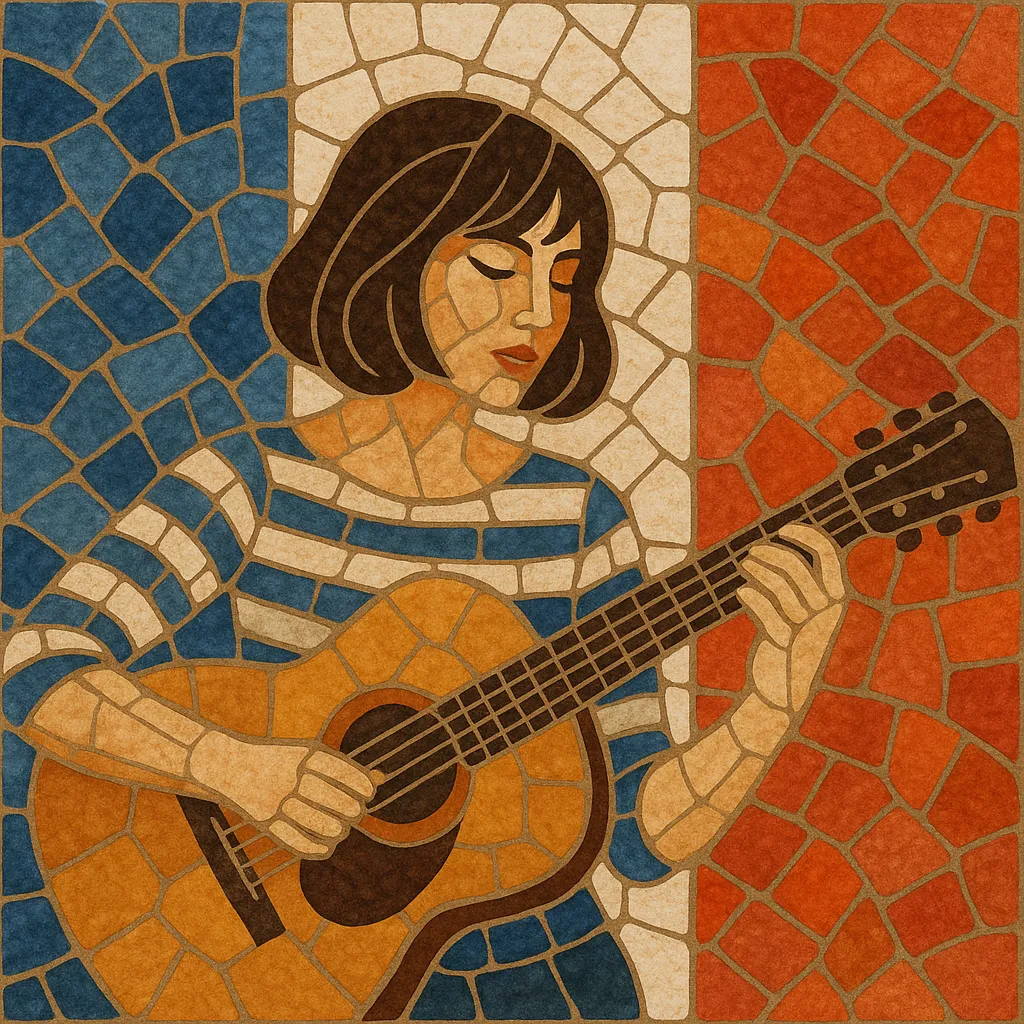French pop is the mainstream, melody-forward popular music sung primarily in French that blends the lyrical sophistication of chanson with the hooks, structures, and production of international pop. Its core is songcraft: memorable choruses, clear vocal presence, and arrangements that balance acoustic warmth with electronic gloss.
Evolving from the 1960s yé-yé wave, the style absorbed elements of disco, new wave, synth-pop, and later electronic and hip hop production, while retaining a distinctly French sensibility in storytelling, wordplay, and romantic themes. Modern French pop ranges from intimate, soft-pop ballads to sleek electro-pop, but it remains anchored by expressive vocals and concise, radio-ready forms.
French pop coalesced in the 1960s out of the youth-driven yé-yé movement, which localized Anglo-American rock and pop for Francophone audiences. Artists such as Françoise Hardy, France Gall, and Sylvie Vartan popularized concise, hooky songs delivered with breezy vocals and modern fashion-forward imagery. Chanson’s literary lyric tradition and crooner aesthetics informed these songs, giving French pop an early blend of charm, clarity, and wit.
In the 1970s, the genre expanded through variété française, which fused chanson with disco, orchestral arrangements, and radio-friendly production. Figures like Serge Gainsbourg and Michel Polnareff pushed harmonic and lyrical ambition, while the 1980s brought synth-pop and new wave textures. Mylène Farmer and Étienne Daho embodied a refined, electronic-leaning French pop that emphasized cinematic production, melancholy atmospheres, and memorable refrains.
During the 1990s, the global rise of French electronic music (often called French Touch) influenced pop arrangements and sound design, introducing punchy side-chained synths, filtered disco samples, and sleek minimalism. Vanessa Paradis and Alizée bridged classic pop sensibilities with contemporary production, while the broader scene adopted elements from R&B and hip hop without losing the centrality of melody and French-language hooks.
In the 2010s, French pop broadened stylistically and geographically, with Belgian and other Francophone artists achieving international success in French. Acts like Christine and the Queens, Stromae, and Angèle melded electro-pop, indie, and urban rhythms with sharp lyricism and elegant visual identities. Today, French pop spans soft, nostalgic balladry to dance-forward electro-pop, maintaining its focus on articulate vocals, melodic immediacy, and culturally resonant storytelling.


